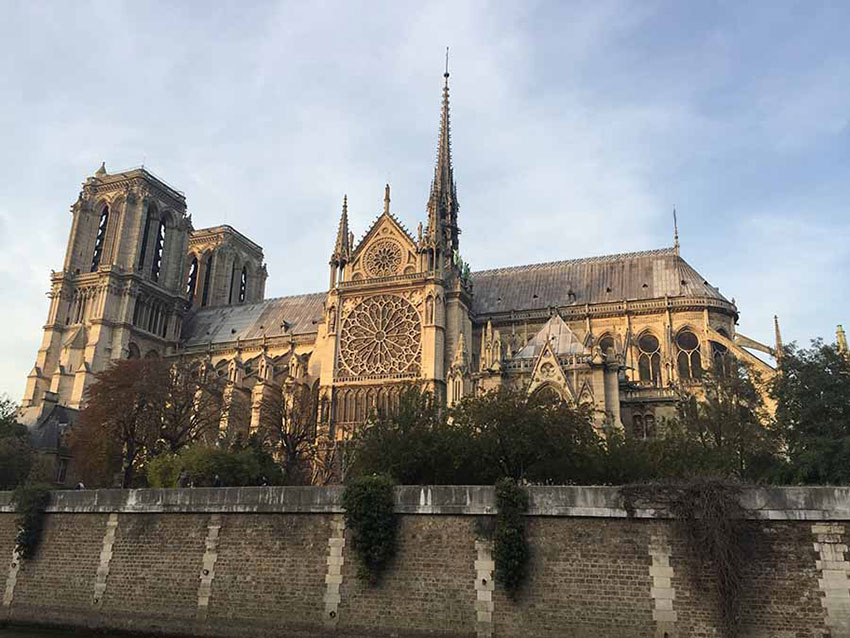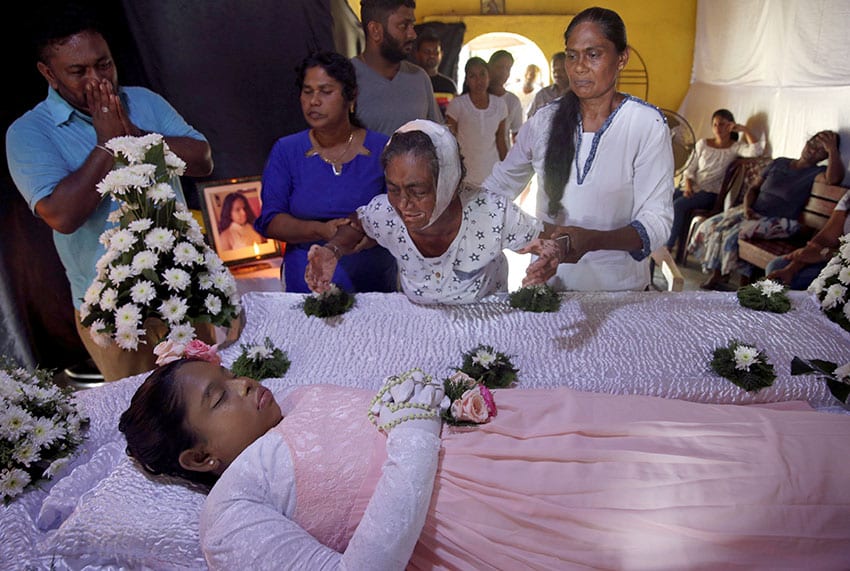
A fire guts a world-famous cathedral. On the other side of the world fanatics slaughter hundreds. Are the two things related?
Two events of the last week riveted the eyes of the world upon what appeared to be tragedies: the fire that gutted one of the most iconic churches in Christendom – Notre Dame Cathedral in Paris – and the bombings last weekend in Sri Lanka which killed 300 or more people, wounding hundreds more.
In light of the carnage in Sri Lanka, the word ‘tragedy’ in relation to Notre Dame is clearly relative. It would be worth burning a hundred Notre Dames if that could bring back the innocent lives lost in Sri Lanka or – for that matter – Christchurch or any of the other troublespots which proliferate around the world such as Yemen where, last October, the United Nations warned that 13 million people were facing a man-made famine shaping up to be the worst the world has seen in one hundred years.
What humans are capable of and what they could be
Strangely, there are connections of kinds between the two events. That human beings could build an edifice as inspiring as Notre Dame – by hand – centuries before the Industrial Revolution, and without the help of computers, manufacturing and all the technology we believe makes the 21st Century the most advanced in all history should confer upon us humility. For all our technical supremacy, we cannot do today what men did a thousand years ago for one simple reason: we do not have the will.
And yet Notre Dame shows what human beings are always capable of, what the human spirit can achieve when it is inspired, especially by the love of God and even more specially when inspired by His Mother. What, we might wonder, would be possible in the modern world if the will and belief which erected Notre Dame, Chartres and Canterbury cathedrals could be revived – much less enlarged?
Related: a tale of two cathedrals
However there was a strange dimension to the fire which seemed, at one level, to make it so symbolic of our era. As the world mourned Notre Dame it appeared, at the same time, that much of it appears to be increasingly rejecting everything which this magnificent structure has ever represented: man’s intimate relationship with God, God’s immense and sacrificial love for us, and our desire to draw closer to Him (and therefore to all other human beings) through prayer, worship and sacrifice. That the fire came in the week of the greatest of all Christian feasts where we remember and mark again the passion and suffering of the innocent figure of God’s Son abandoned and rejected by His own was, to say the least, paradoxical. At a deeper level it almost felt disturbing. And yet, like Easter, Notre Dame can – and will – be rebuilt.
Blasphemy and horror in Sri Lanka
But if Notre Dame was symbolic, the insane carnage which horrified the world in Sri Lanka last weekend was not. If ever we were to seek a definition of evil we would need to go no further than Colombo and the blasphemers against the holy name of God who carried it out. If Notre Dame is a work for the glory of God, the bombings in Sri Lanka are a work of destruction, horror, a rejection of God.
But even here, a strange and deeply unsettling symbolism is already apparent. Those who killed, maimed and injured are not religious people deeply committed to a faith or a creed, but fanatics who spit on the image of God and would spit in His face. By blowing up Christians they imagine they are destroying Christianity and Christian faith. But such individuals would be astonished to discover that they are actually doing the opposite. By tradition, Christians believe that all those killed for hatred of Christ are rewarded personally by Him just as He rewarded the repentant thief: “Today you will be with me in Paradise.” When 300 or more people died on Easter Sunday, the day of the Resurrection, Christians the world over knew they had good reason to believe that 300-plus new saints instantly joined the Church in heaven to become part of that vast invisible cloud of witnesses mentioned by Paul who constantly intercede for the Church and mankind.
The paradox of purification
Our Church is going through strange times. But, it seems, we are being purified for the times, including for the terrible sins which have occurred within our own ranks. We know that we have no words or power which can take away the grief placed upon the hearts of the people of Sri Lanka, nothing except our prayers and our love which can make up for the despicable murder of our innocent brothers and sisters. But this time next year, as Sri Lankan Catholics again gather to remember and celebrate the passion, suffering and victory of their Lord, the churches will be even fuller. Those who have murdered and wreaked carnage against innocent people do not realise that by doing this they do not make us weaker. They give the Church martyrs and confessors for the Faith. With every bomb and with every bullet they make us stronger.

